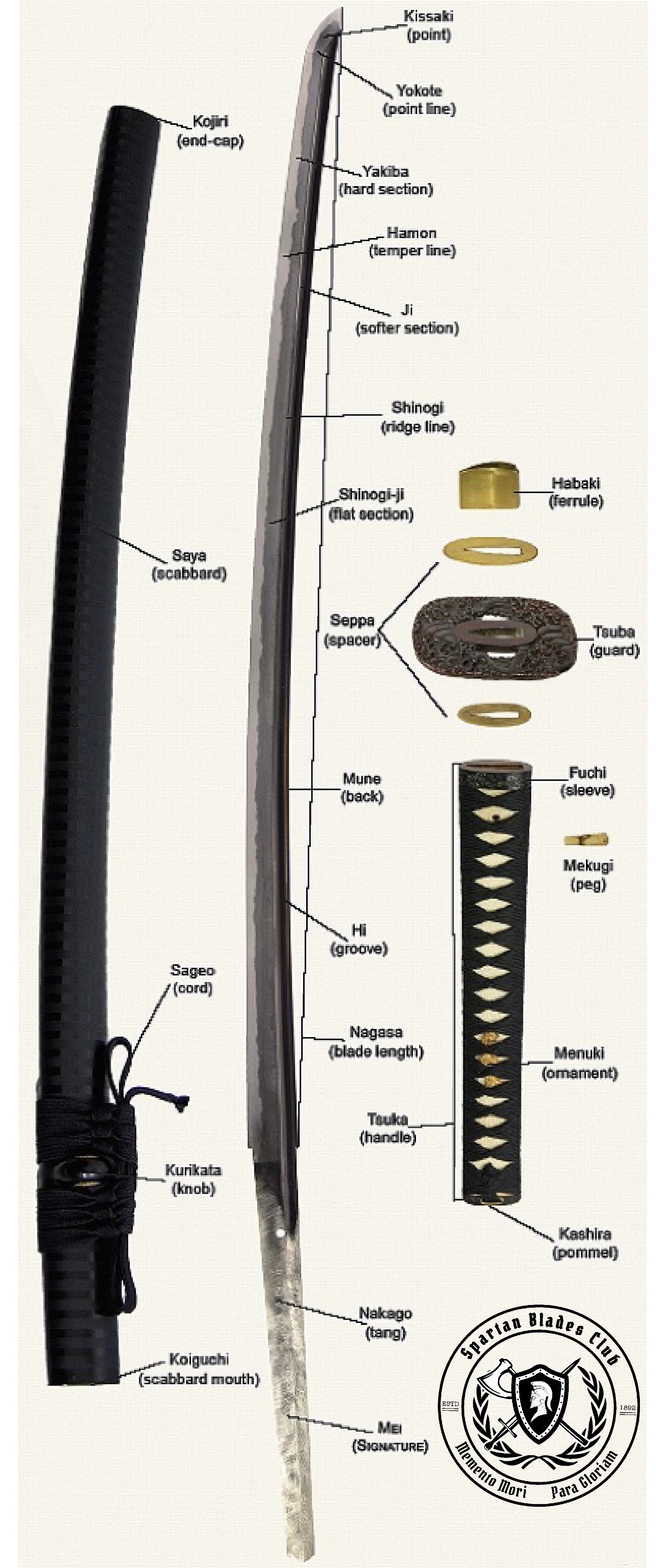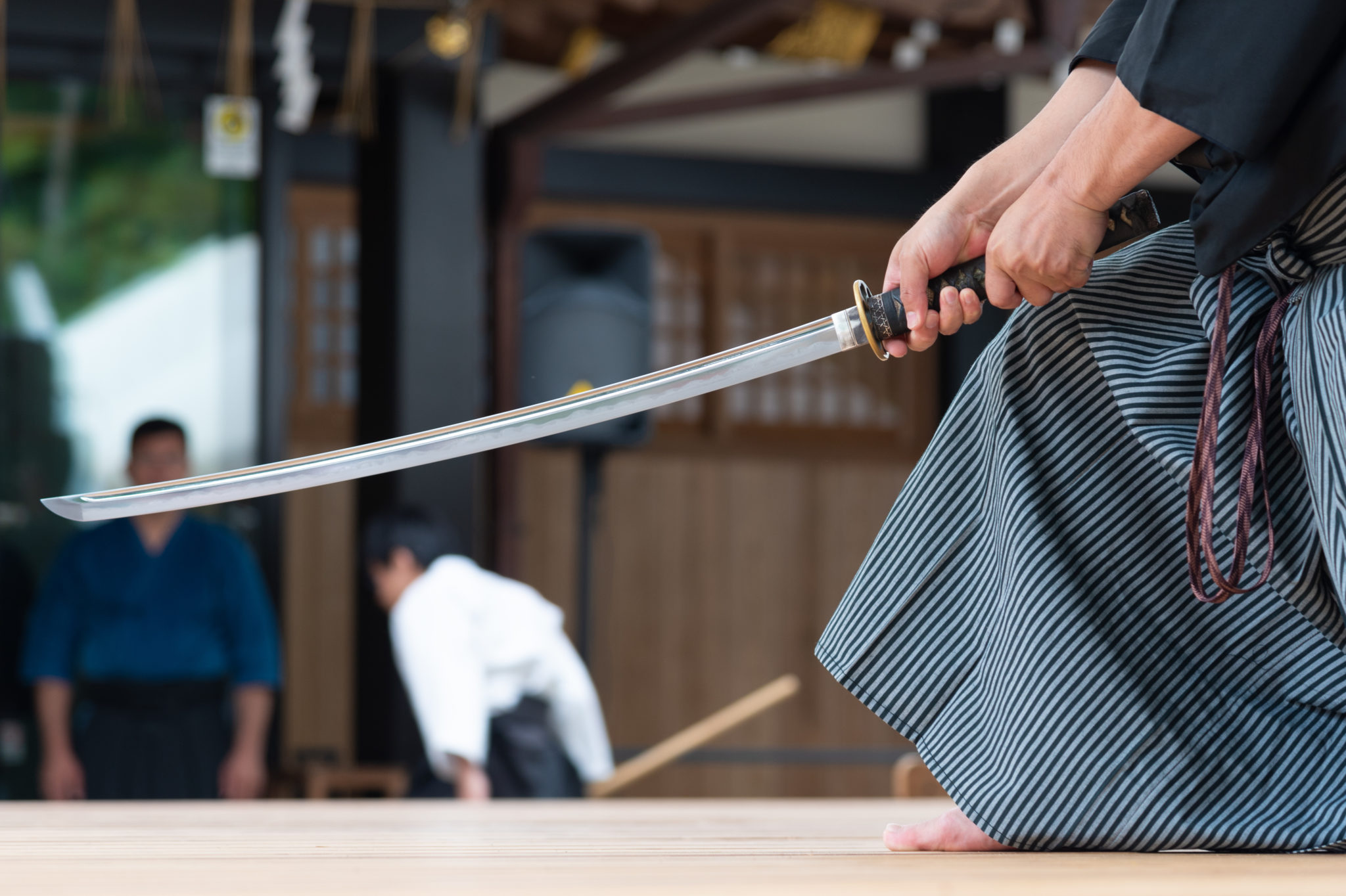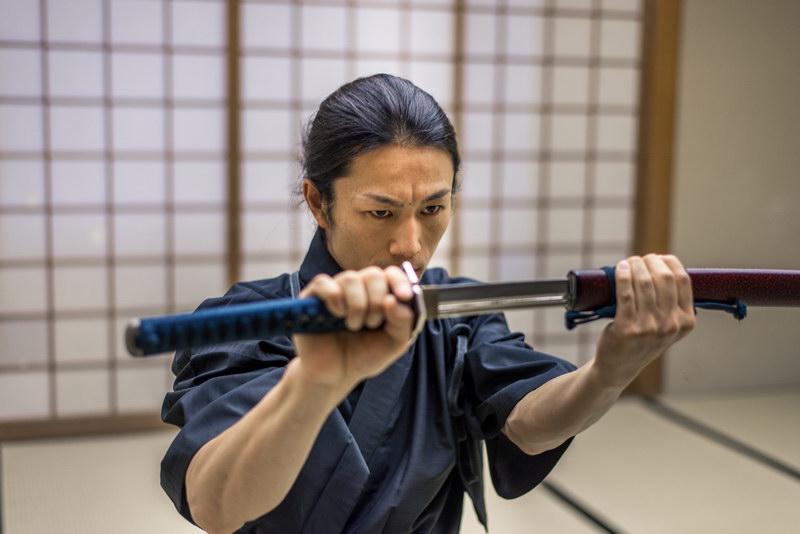Buying A Katana The Katana: Everything You Need To Know
Buying A Katana
The Katana: Everything You Need To Know

The Katana is a weapon that is widely known by those who are students of the sword, as well as those who are only casually interested in all things martial arts. You will see this sword frequently throughout the Quentin Tarantino films, Kill Bill 1 & 2. It is one of the easiest to spot for those who only know basic information about the samurai, and is oftentimes considered to be the only sword used by these soldiers (though this is an untrue assumption). This blog is going to explore the history around this sword, how smiths craft it, as well as information about how to use it within the martial arts.

How Did The Katana Come Into Being?
The earliest usage of the term katana is around the 12th century, but it came into prominence during the Muromachi Period, which spanned 1337 to 1573. The katana evolved from the tachi, and it seems that it evolved due to a different sword wearing style by the samurai. In fact, samurai would wear their swords with the signature of the maker facing away from the individual wearing it. Samurai wore the katana along the small of their back with the cutting edge up; if a tachi were worn in this fashion, the signature would not be seen. However, the katana signature would be facing out from the wearer. Historians note that the katana signature started appearing around early 1400, though many are unsure just when the samurai changed how they wore their swords.
The katana became popular to use because of the evolution of close combat. It allowed the samurai to draw their swords quickly, which helped win the victory quicker and keep the samurai alive longer. The soldiers carried the sword through a sash like belt, with the edged blade facing up, allowing the samurai to grab the sword quickly. This ability to quickly grab the sword allowed the samurai to draw their blade and strike down their opponent in one fluid motion. Katana range from 60 cm to 80 cm, but the majority of blades are around 70 to 73 cm. In order to make close-combat fighting even easier, the katana is paired with another sword known as the wakizashi, which is also referred to as a companion sword.
How Do They Craft The Katana?
The majority of katana are made with traditional Japanese steel called tamahagane. Sword smiths craft this steel by repeatedly layering it with different carbon components, making the blade very strong. This process ensures that all parts of the blade are pure and have an even carbon content. Smiths who combine low and high carbon concentrations in steel do this by folding the different components over and over each other until it turns into a block. The crafter then forms it into a billet, which has little to no curve. It goes through a long process of being crafted by heating and cooling the blade while applying other elements to it. This process helps it get the curve everyone is familiar with while making sure the integrity of the blade is maintained. Once the process finishes, the sword is then polished, which takes anywhere from one week to three. Once the polishing is completed, the katana will have that gorgeous mirror-like shine about it.

Types Of Steel Available Now
Modern day katana (post 1953) are made in various methods, which can range from steel that is light for display swords to very strong for swords used in martial arts. The steels used are as follows:
· Damascus Steel: This is commonly used in Middle Eastern sword design, but is also part of making a katana or other samurai swords. These blades are extremely durable and tough. The swords made from Damascus steel do not shatter and can are sharpened into a strong, efficient edge.
· Spring Steel: People know this metal for being able to go back to its intended shape, which is why many people used it in lock picks for a long time. It is now used in competition swords because it is safe from snapping or shattering while being used.
· High Carbon Steel: Swords that use high carbon steel are more likely to have fewer impurities and be more resistant to damage.
· Folded Steel: Folded steel is simply steel that has undergone the folding process, which is one of the most useful ways to forge a sword. “Folded steel” means that the steel has been folded over itself multiple times to ensure that it is strong and high quality. This process is popular for samurai swords and many other swords.
· Tamahagane: This is the steel that the Japanese prefer to use for their swords. Tamahagane means, “jewel steel” and uses iron sand for creation. This steel is most commonly used for samurai swords, specifically the katana. The process for making this steel can take 36 to 72 hours, with iron being added to the steel every ten minutes or so. Much like diamonds, buyers can learn the quality of the Tamahagane from its color.
How Can You Use It In Martial Arts?
Katana were used by samurais in combat, as well as in the practice of multiple martial arts. However, while not used for combat, it is still used today when it comes to these martial arts. There are a few steps you can take as you learn how to use a katana in martial arts. They are:
· Decide on which form of martial arts you are planning to learn. The various types of martial arts that utilize katana are kenjutsu, iaijutsu, kendo, or iaido. Every form of martial art will have a different style; this makes it imperative to know which one you want to follow. Consider going to a few classes and watching the different arts being practiced before making your decision.
· Research different classes to see which one will suit you best. Just as the art form will be different, so will the teacher. You will want to make sure you find one that suits you.
· Locate a sensei to teach you not only how to use a sword, but also how to show it the proper respect. A sensei will also make sure you are practicing as you should. Martial arts take discipline and perfect precision. This can be difficult to achieve on your own, and a sensei will be the perfect guide.
Important Information Regarding The Katana
Remember that this sword is a weapon and that you must treat it with the respect you should show towards any weapon. The majority of katana will be sharp, and, while no longer used for combat, it is still considered a tool by those who practice the art of Japanese sword fighting. In fact, antique swords that people maintain well can cut perfectly many centuries later. It is best never to get relaxed around the sword, if you do, you will receive a very painful reminder that it can cause injury. (Some may think it is a silly joke, but many shops will sell first-aid kits for this very reason!)
You should also learn how to store the katana and maintain it throughout the years. If it is not stored correctly or regularly maintained, it can become irreparable. Here are a few tips to make sure your katana stays just as sharp and beautiful as it was the first day you received it:
· Store the katana in its sheath horizontally, with the sharp edge facing upward and the curvature of the blade facing the ground; this will help maintain the edge, staying sharp.
· Always make sure the katana is always well oiled, as well as polished, powdered, and sharpened. The oil, powder, and polish will make sure that the blade does not rust over the years and maintains that gorgeous mirror sheen. You can find oil when you purchase your katana and can repurchase more as necessary.
· If you find that you will not be using the katana for a long time, then make sure you inspect it regularly or have someone else inspect it if you are not nearby. In addition, make sure you air out the katana. This will help keep it from rusting and to stop mold from forming in the sheath.
In Closing, Always Respect The Katana
The katana is a gorgeous sword and a wonderful way to make sure the tradition of the samurai sword stays in practice. It will always be a sword people are fascinated by, and its history will always have that strong pull for non-enthusiasts and enthusiasts alike. When you purchase your katana, make sure you always give it the respect it deserves. It has a long and rich history, being honored for long centuries. Consider putting the katana in a central room where people can view it or where you will be able to see it constantly to feel that incredible pride in such a wonderful blade.


 USD
USD










